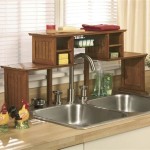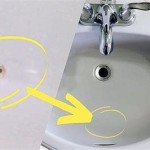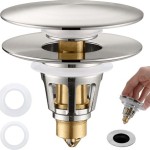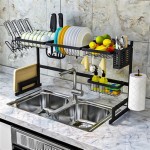Stainless Steel Sink Rust Spots
Stainless steel sinks are a popular choice for kitchens and bathrooms due to their durability and corrosion resistance. However, even stainless steel sinks can develop rust spots if they are not properly cared for.
There are a few different factors that can cause rust spots on stainless steel sinks, including:
- Exposure to water: Water is the main cause of rust, so it is important to keep your stainless steel sink dry as much as possible. If your sink does get wet, be sure to dry it off with a clean towel.
- Exposure to chlorinated water: Chlorinated water can also cause rust spots on stainless steel sinks. If your tap water is chlorinated, you can use a water filter to remove the chlorine.
- Exposure to acidic foods and drinks: Acidic foods and drinks can damage the protective layer of chromium oxide that forms on stainless steel. This can make the sink more susceptible to rust.
- Exposure to iron: Iron is a common metal that can cause rust. If your sink comes into contact with iron filings or other iron-containing materials, it is important to clean it off immediately.
If you notice rust spots on your stainless steel sink, there are a few things you can do to remove them:
- Use a mild abrasive cleaner: A mild abrasive cleaner, such as Bar Keepers Friend, can be used to remove rust spots from stainless steel sinks. Apply the cleaner to the rust spot and scrub it with a soft cloth. Be careful not to scratch the sink.
- Use a vinegar and baking soda solution: A vinegar and baking soda solution can also be used to remove rust spots from stainless steel sinks. Mix equal parts vinegar and baking soda in a bowl and apply the solution to the rust spot. Let the solution sit for a few minutes and then scrub it with a soft cloth.
- Use a commercial rust remover: There are a number of commercial rust removers available that can be used to remove rust spots from stainless steel sinks. Follow the directions on the product label carefully.
Once you have removed the rust spots from your stainless steel sink, be sure to take steps to prevent them from coming back. This includes:
- Keep your sink dry: Dry your sink completely after each use with a clean towel.
- Avoid using harsh cleaners: Harsh cleaners can damage the protective layer of chromium oxide that forms on stainless steel. Use a mild detergent and water to clean your sink.
- Avoid exposing your sink to acidic foods and drinks: Acidic foods and drinks can damage the protective layer of chromium oxide that forms on stainless steel. Rinse your sink with water after exposure to acidic foods and drinks.
- Avoid contact with iron: If your sink comes into contact with iron filings or other iron-containing materials, clean it off immediately.
By following these tips, you can help keep your stainless steel sink looking its best for years to come.

How To Remove Rust From Stainless Steel Sinks Ruvati Usa

Rust In Your Stainless Steel Sink Duncan S Creative Kitchens

How To Remove Rust From Stainless Steel Sinks Bar Keepers Friend

How To Remove Chemical Stains From A Stainless Steel Sink Chica Dragon

How To Remove Rust Stains From Stainless Steel Pins And Procrastination

How To Remove Rust Stains From Stainless Steel Sinks
Stainless Steel Sink Is Rusting After Only 2 Months Diy Home Improvement Forum

How To Remove Rust Stains From Stainless Steel Pins And Procrastination

Organised Mum Shares How To Remove Rust Stains From Stainless Steel

Rust In Your Stainless Steel Sink Duncan S Creative Kitchens







